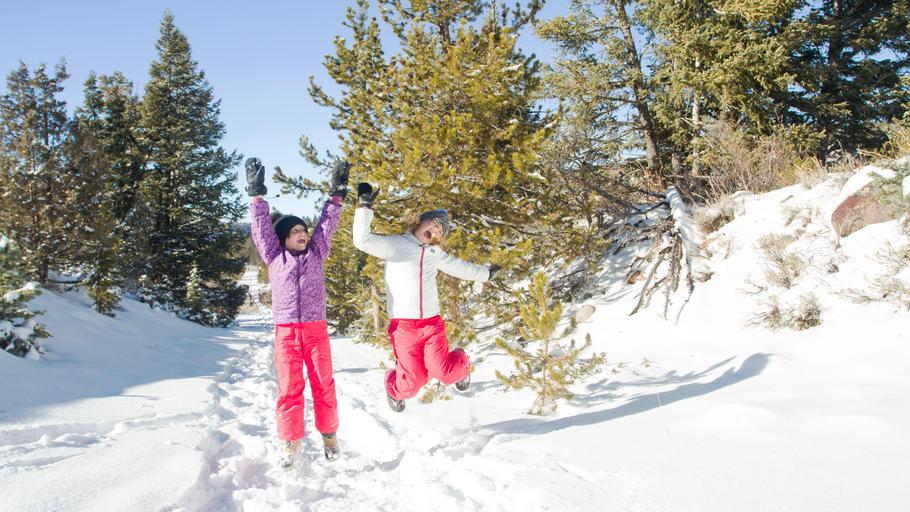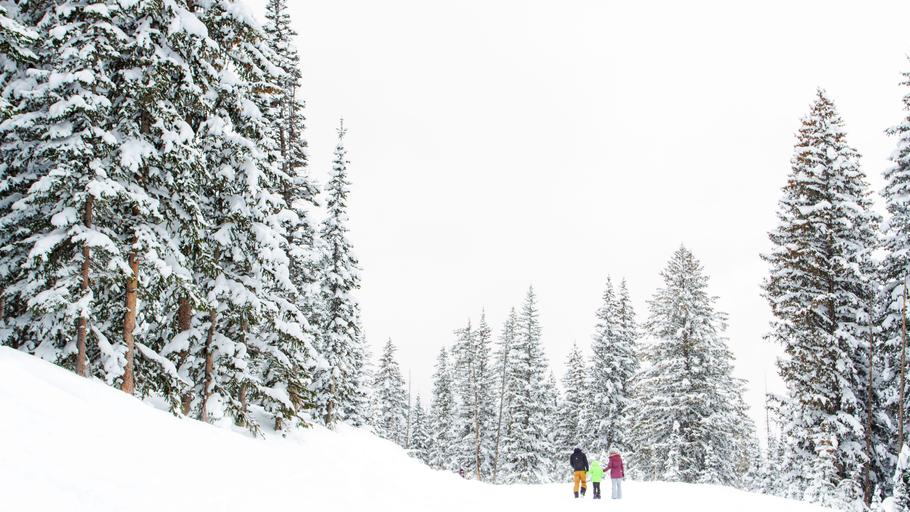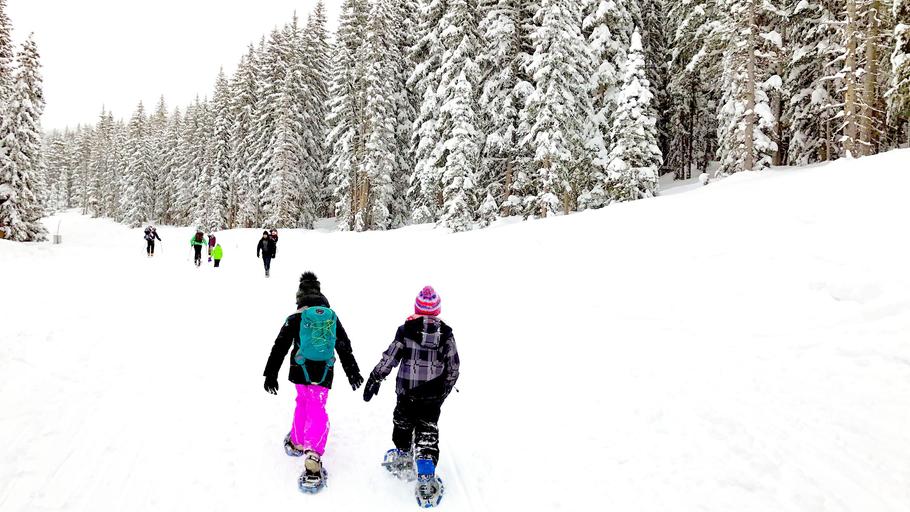Snow Safety 101 for the Family
- Posted On
- Jan 17, 2020
By Greg Scothern
When most people think about winter recreation in Utah, skiing will likely be the first thing that comes to mind…and for good reason. Quick, easy access to The Greatest Snow on Earth makes Utah one of the best ski destinations on the planet. But skiing isn’t the only way to enjoy Utah’s mountains in winter. Snowshoeing, cross-country skiing and sledding have always been popular wintertime activities, and more families are catching on to these outstanding, cost-effective winter sports that don’t require pricey lift tickets or as hefty of an investment in gear. These activities are excellent ways to keep your family active in the outdoors during winter, and they allow for a more intimate, quiet interaction with the incredible peace and beauty that makes winter in the mountains so magical.
Backcountry travel in the mountains can be incredibly rewarding, but there are manageable risks that every family needs to consider before venturing out for a day of backcountry recreation. Avalanches and sudden weather changes are always possible, and a little bit of knowledge and preparation will go a long way to keep your family safe while traveling through the backcountry.
You don’t need to be an expert in avalanche safety to make good decisions in the backcountry. Backcountry skiers and snowmobilers expose themselves to far more risk by traveling directly on avalanche terrain, making avalanche rescue gear (shovel, beacon, & probe) an absolute necessity. But for the purposes of this article, we will focus on snowshoers and cross-country skiers who rarely find themselves on slopes with the potential to avalanche. They do often travel adjacent to avalanche terrain, however, and avalanche fatalities have occurred from snowshoers who’ve triggered slides from below a slope, so some basic understanding of the snowpack, general avalanche conditions, and safe route-finding is a must.
Keeping your family safe in the backcountry is neither difficult nor complicated, but there are three basic things you want to be sure you understand before heading out for your backcountry adventure:
- Know how to read and interpret the avalanche advisory.
- Know how to recognize and avoid avalanche terrain.
- Know how changing weather can impact avalanche conditions.
First and foremost, the simplest and most critical thing you should do before every outing is to read the local avalanche advisory. Advisories are found on the Utah Avalanche Center’s website at www.utahavalanchecenter.org, and are broken down by each mountain region (Logan, Ogden, Salt Lake, Provo, Skyline, Moab, and Abajo Mountains. Be sure to read the advisory for the area you will be playing in, as conditions can vary from one region to the next. The advisory will list the current avalanche danger based on a five-point danger rating, as well as detailed avalanche concerns for specific slopes, elevations, and aspects. It’s a good idea to get familiar with what each of the five danger ratings means:
- Low Danger: Generally safe avalanche conditions. Watch for unstable snow on isolated terrain features.
- Moderate Danger: Heightened avalanche conditions on specific terrain features. Evaluate snow and terrain carefully; identify features of concern.
- Considerable Danger: Dangerous avalanche conditions. Careful snowpack evaluation, cautious route-finding and conservative decision making essential. Natural avalanches are possible; human-triggered avalanches likely.
- High Danger: Very dangerous avalanche conditions. Travel in avalanche terrain not recommended; natural and human-triggered avalanches very likely.
- Extreme Danger: Avoid all avalanche terrain; natural and human-triggered avalanches certain.
Understanding this danger scale is the first step in your decision-making process, and should heavily influence where you decide to play for the day. Historically, nearly half (47%) of all avalanche fatalities occur during periods of considerable danger. Does this mean you should scrap your plans because the danger rating is at or above considerable? No…but it should absolutely determine where you decide to go.
Regardless of the danger rating, you can always find safe terrain for snowshoeing or cross-country skiing because you don’t need steep slopes for these activities. Simply stated, avalanche terrain is any terrain that is on or immediately adjacent to a slope of 30 degrees or more. The simplest way to determine a slope’s angle is to use one of the many free level or inclinometer apps available for your smartphone. Simply sight the slope along the edge of your phone with the app running, or lay a trekking/ski pole on the slope and set your phone on the pole. If it’s 30 degrees or steeper, it’s best to take a wide approach crossing beneath the slope. Even on low-danger-rated days, always try to avoid traveling directly below a slope greater than 30 degrees just to be safe. If it cannot be avoided, it’s always best to space your group out and cross the area one at a time to minimize the risk of triggering a slide from below the slope. On days with considerable or higher danger ratings, avoid terrain directly adjacent to steeper slopes altogether. There are many areas that have great snowshoeing and XC skiing terrain that do not interact with avalanche terrain, like the Nordic trails at ski areas where there is avalanche control, designated winter sports parks like North Fork Park or Soldier Hollow, or the many mountain valleys or foothill areas with large expanses of trees, meadows, and gently rolling terrain. These are fantastic options on days with elevated avalanche danger.
Another important feature to avoid near avalanche terrain is a “terrain trap.” Terrain traps are gullies, stream beds, depressions, etc. that a nearby avalanche would likely flow into. Even a slide triggered some distance away can run for long distances in a terrain trap. A basic rule of thumb is if water will flow into it, it’s a terrain trap, and should be avoided if possible. Crossing terrain traps is unavoidable sometimes, so just be sure to cross them quickly and not linger. Choose terrain that water would flow off of, like broad, gently sloping shoulders and ridges, or low-angle hillsides away from avalanche terrain.
Weather can play a significant role in avalanche danger as well, so it’s important to know what the weather is expected to do throughout the day, and actively observe changing weather while you are out. Wind can transport incredible amounts of snow in a very short time, piling snow on leeward slopes, which can, in turn, change avalanche conditions dramatically. A slope with a low danger rating in the morning when you start, could change to a considerable danger rating a short time later when you are returning. If the wind kicks up while you are out, it’s always safe to assume that the danger level will be rising as a result, so steer clear of avalanche terrain.
Sun and rapid warming will also impact avalanche danger. As the sun heats the snow, it can become saturated with water, raising the risk for a wet slide. Wet slides are much slower than other avalanches, but can be extremely destructive. This typically occurs in the afternoon on southeast to southwest facing slopes and is especially common in the spring when overnight temps may not dip below freezing and the sun’s energy is more concentrated. But rapid warming can occur anytime the sun is out, and it’s not uncommon even in the colder months, especially during inversions. Signs that the snow is warming and becoming unstable include large horizontal cracks in the snow, snowballing, and pinwheels running down the slope. Again, steer clear of terrain that could avalanche when you observe warming snow.
Another useful strategy is to pay attention to how the snow feels underfoot. Listen to the sounds it makes as you travel. If the snow feels supportive at first, but when weighted gives way or collapses, that can be a sign of a weak layer beneath the surface snow and is a sign of instability in the snowpack. Also, listen for occasional “whumpf” sounds. This is the sound of a weak layer collapsing somewhere in the snowpack. Cracks that propagate or jut out from your steps are another sign of instability. If you are observing any of these events on level terrain, they are signs of instability and heightened avalanche danger, so be aware of your surroundings and avoid avalanche terrain.
One last thing to consider: always be prepared to survive the night. Quick moving storms, injuries, or getting lost have stranded even some of the most experienced backcountry travelers. Regardless of how nice the weather is or how short the planned trip is, each member of your party should carry a day pack with extra layers, food, survival blanket, first aid, and fire-starting gear. Most outdoor retailers sell affordable, lightweight survival packages with just about everything you need to survive a night in the cold.
Taking a few minutes to plan and educate yourself on the current conditions before you walk out the door is really the simplest way to ensure your family travels safely in the backcountry. It only takes a few minutes, and it saves lives. Now get online, get the report, and get your family out there!
Important Links:
Tags
Snow Safety, Winter Family, Snowshoe, EducationArchives
- 2023
- 2022
- 2021
- 2020
- 2019
- 2018
- 2017
- 2016
- 2015
- 2014
- 2013
- 2012
- 2011
- 2010





